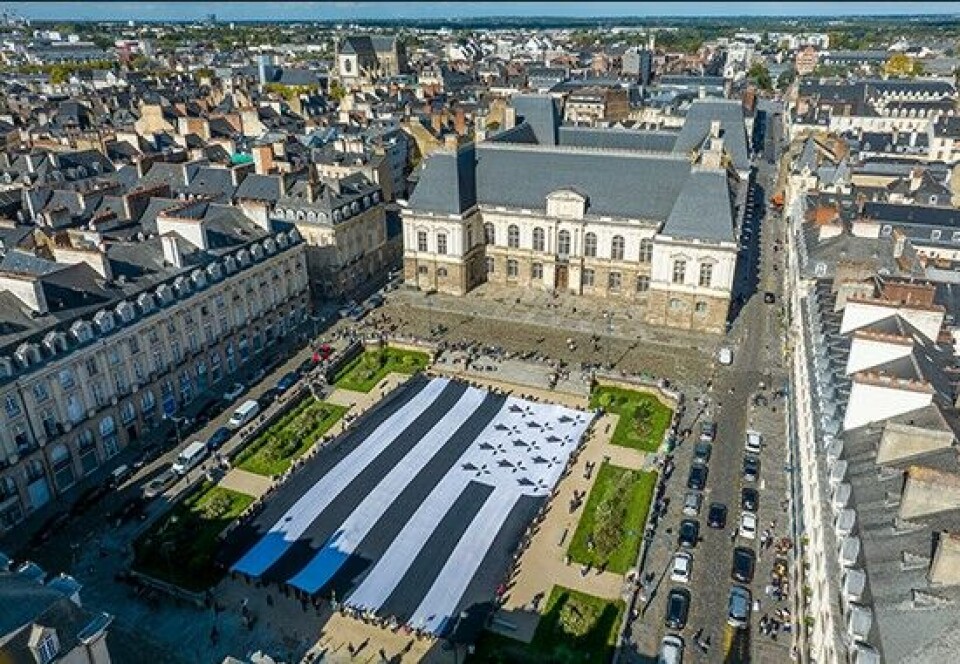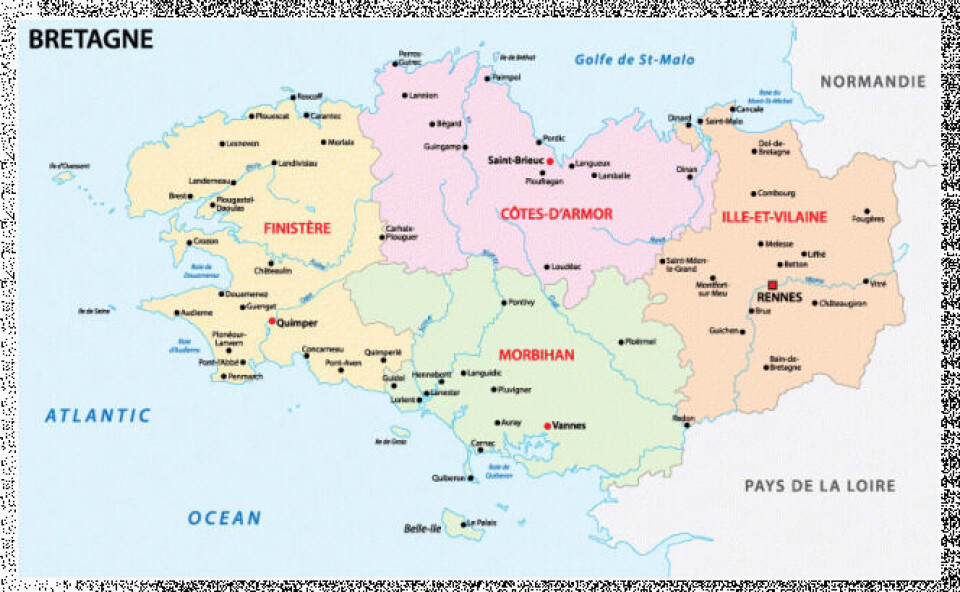-
Top Paris restaurants to sell off 20,000 tableware items
Pieces set to go on sale include glassware, cutlery, and silverware, as well as bistro tables and chairs. Money raised will go in part to charity
-
2025 world economy rankings: France classed above the UK and US
France’s low inflation rate helped it beat many other nations
-
Speed, alcohol, drugs: French ski resorts take action
Behaviour of some skiers a cause for concern as severity of injuries worsens
Largest ever Brittany flag displayed in call for more local power
Activists gathered in Rennes to demand autonomy and for the Loire-Atlantique department to re-join Brittany

A huge Breton flag was unfurled in parliament square in Rennes in a campaign for greater autonomy in Brittany and for the Loire-Atlantique department to join the region.
The 1,400m² flag is said to be the largest Breton flag in the world and was also displayed in Nantes (Loire-Atlantique) ahead of France’s presidential elections. Nantes was part of Brittany for centuries, having joined the kingdom in 851.
However, in 1941, a law passed by the Vichy government removed the Loire-Inférieure, as Loire-Atlantique was then known, and attached it to Angers regional prefecture.
That decree was overturned in 1944 but when metropolitan France was divided into 22 regions in 1956, Loire-Atlantique was part of Pays de la Loire.
‘We were dispossessed of our Breton identity’
Michèle Moreau, committee member at À la bretonne!, the association behind the giant flag, said: “We have no common history. We were dispossessed of our Breton identity.”
In September, Brittany’s regional council voted to launch an impact assessment on reunification, which will be co-financed by Loire-Atlantique.
The results are due to be published by next March, with the hope of a consultation to follow, and potentially a referendum.
The calls for reunification go hand in hand with demands for greater autonomy.
“We are not asking for independence. We consider ourselves French. Autonomy just means having the possibility to choose what is done at a local level, and having the fiscal autonomy to go with it,” Ms Moreau said. “Our objective is to arrive at a sort of regional democracy, while still being part of the French state.”
Tired of the major decisions all being taken in Paris
Tired of the major decisions all being taken in Paris, activists want the region to have the power to decide things such as hospital closures.
Ms Moreau also cited transport as an area where devolved powers could be used to improve people’s lives.
“I live in Saint-Nazaire, and there are no direct trains to Rennes [130km away] so I have to go via Nantes which, with the connection, takes around three hours.”
Some question whether reunification would ignite rivalry between Nantes and Rennes over which becomes the capital of the expanded region, with fears of loss of status and jobs, but she says power has always been split.
“The parliament of Brittany was in Rennes, but the dukes lived in Nantes. Loire-Atlantique is more of an economic hub, which is why there are lots of people from Brittany there. Nantes could be an economic capital, and Rennes the administrative capital.”
Officially became French in 1532

Credit: Rainer Lesniewski / Shutterstock
Although it officially became French in 1532, Brittany maintains a unique identity, often in reference to its Celtic heritage and the Breton language.
Read more: Celtic nations descend on France to celebrate shared ancestry
Read more: Five regions in France that have not always been French
Calls for greater powers have heightened since interior minister Gérald Darmanin said in March that France is prepared to grant autonomy to Corsica.
“Corsica is the proof that we can keep the constitution we’ve had since 1958 and include a certain autonomy for the regions,” Ms Moreau said.
Read more: Brittany votes to ask for autonomy from France after Corsica statement
In October 2021, Brittany’s regional council adopted a resolution to request the state “begins, with a view to 2024, the legislative process for consulting the electors of Loire-Atlantique on whether or not they wish to join Brittany”.
This June, Loire-Atlantique councillors also adopted a resolution to request a referendum on the issue.
In 2018, 105,000 residents in the department signed a petition from the association Bretagne Réunie, demanding a consultation, but not a referendum, which the association judged “too dangerous” for its cause.
Flag was only designed in 1923
The Gwenn ha du (White and black), as the flag of Brittany is known, is one of the most recognisable in France.
The nine horizontal stripes represent the dioceses into which Brittany was traditionally divided.
The figures in the top left represent the ermine (stoat), an animal which appeared on the flag of the Duchy of Brittany as early as 1318.
The creature is at the centre of local folklore, as the Duchess Anne of Brittany is said to have been hunting an ermine when it stopped before a muddy field.
It turned and said “Kentoc’h mervel eget bezañ saotret” (Rather death than stain), which became the region’s motto.
It is branded all around the world as a symbol of Breton identity, but the flag was only designed in 1923.
Related links
Two Brittany house sprayed with anti-second home graffiti
Ferries boss takes on Irish consul role to boost links with Brittany
French property watch: Bag Ille et Vilaine bargains away from the sea
























